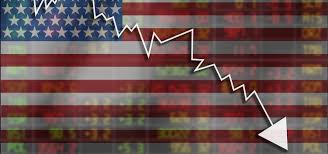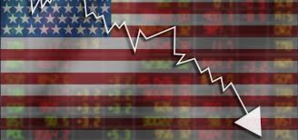According to one prominent economist, a more hawkish stance by the United States Federal Reserve could cause a slowdown in the U.S. economy even while many have welcome the Fed stance following more than a decade of low interest rates.
While contemplating a strong growth in the country’s economy, the Federal Reserve is looking to make two more rate hikes in 20-18 following Wednesday’s rate hike - the second so far this year.
However, the risks of this strategy were reminded by But Jim McCaughan, the chief executive of Principal Global Investors.
"The way I interpret this is, one further rate increase is probably the right answer for the rest of the year," he said in a television interview. On Thursday. The economist believes that a more doveish route for the central bank is better suited for the economy. There are $311 billion in assets under management with his investment fund which is based in the U.S.
"Two further is probably what they'll do, but they run the risk then of getting to the ultimate level fairly quickly and causing some slowness in the economy, which will bring about an inverted yield curve much sooner than it needs to happen."
A typical telltale sign of a coming recession is an inverted yield curve because it signals that short-term lending is considered to be riskier by markets compared to long-term debts and hence the economy is performing much worse in the present compared to what it would in the future.
There was a disparity between the actual rate of inflation, which according to McCaughan, is actually lower than the published figure and the official consumer price index (CPI) figure as published by the U.S. Bureau of Labor Statistics which supports his argument, he said. The reason for this, according to him, is the development in technology in the U.S. economy and its impact on the enhanced product and service quality which is enabling companies to offer prices that are lower and competitive and this factor is not accommodated in the CPI calculation.
"So when we get to a reported level of 2 percent for inflation, the usual central bank target, the inflation rate in reality will be only around 1 percent," McCaughan argued. "This means that a 3 percent ultimate Fed funds rate would be 2 percent real, which is high for a cash rate, and could actually be contractionary on the economy … Or an excessively restrictive monetary policy."
Wednesday's move by the Fed pushed the funds rate target to 1.75 percent to 2 percent.
However, a statement from the Federal Open Market Committee differed to this argument and said in its statement, "further gradual increases in the target range for the federal funds rate will be consistent with sustained expansion of economic activity, strong labor market conditions, and inflation near the Committee's symmetric 2 percent objective over the medium term."
This 2 percent objective, of course, is exactly where McCaughan finds fault.
McCaughan said that the "symmetric" inflation target is indicative of a trend tendency to let prices run a bit higher before further policy tightening. "So I think they're into modest policy error territory simply because the inflation targeting is giving them a false signal," he said.
(Source:www.cnbc.com)
While contemplating a strong growth in the country’s economy, the Federal Reserve is looking to make two more rate hikes in 20-18 following Wednesday’s rate hike - the second so far this year.
However, the risks of this strategy were reminded by But Jim McCaughan, the chief executive of Principal Global Investors.
"The way I interpret this is, one further rate increase is probably the right answer for the rest of the year," he said in a television interview. On Thursday. The economist believes that a more doveish route for the central bank is better suited for the economy. There are $311 billion in assets under management with his investment fund which is based in the U.S.
"Two further is probably what they'll do, but they run the risk then of getting to the ultimate level fairly quickly and causing some slowness in the economy, which will bring about an inverted yield curve much sooner than it needs to happen."
A typical telltale sign of a coming recession is an inverted yield curve because it signals that short-term lending is considered to be riskier by markets compared to long-term debts and hence the economy is performing much worse in the present compared to what it would in the future.
There was a disparity between the actual rate of inflation, which according to McCaughan, is actually lower than the published figure and the official consumer price index (CPI) figure as published by the U.S. Bureau of Labor Statistics which supports his argument, he said. The reason for this, according to him, is the development in technology in the U.S. economy and its impact on the enhanced product and service quality which is enabling companies to offer prices that are lower and competitive and this factor is not accommodated in the CPI calculation.
"So when we get to a reported level of 2 percent for inflation, the usual central bank target, the inflation rate in reality will be only around 1 percent," McCaughan argued. "This means that a 3 percent ultimate Fed funds rate would be 2 percent real, which is high for a cash rate, and could actually be contractionary on the economy … Or an excessively restrictive monetary policy."
Wednesday's move by the Fed pushed the funds rate target to 1.75 percent to 2 percent.
However, a statement from the Federal Open Market Committee differed to this argument and said in its statement, "further gradual increases in the target range for the federal funds rate will be consistent with sustained expansion of economic activity, strong labor market conditions, and inflation near the Committee's symmetric 2 percent objective over the medium term."
This 2 percent objective, of course, is exactly where McCaughan finds fault.
McCaughan said that the "symmetric" inflation target is indicative of a trend tendency to let prices run a bit higher before further policy tightening. "So I think they're into modest policy error territory simply because the inflation targeting is giving them a false signal," he said.
(Source:www.cnbc.com)






